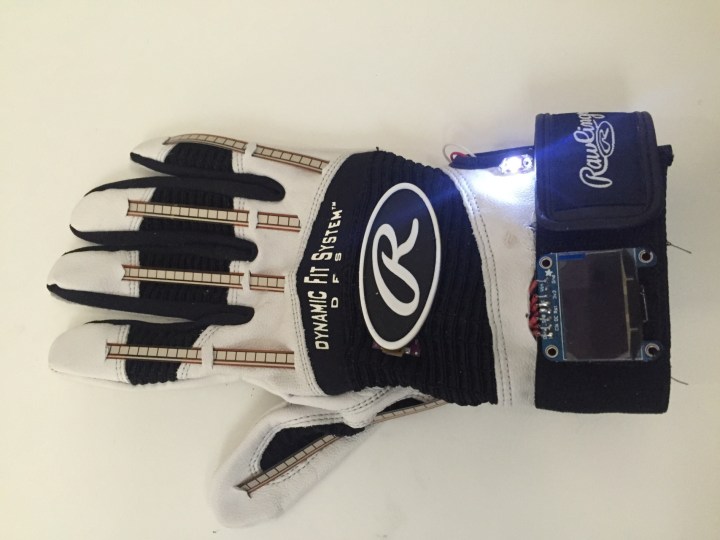
Though sometimes regarded as a universal form of communication, different forms of sign language are used across the world, creating yet another layer of complexity in the realm of human interactions. But one woman is doing what she can to start bridging the gap with her invention, the SignLanguageGlove — a smart glove translates sign language into text or speech.
Hadeel Ayoub, a designer and media artist currently studying at Goldsmiths University of London, has unveiled a new piece of technology that satisfies her mission of “design with a cause,” and may be the key to helping the deaf (and others who sign) communicate more easily with the world.
The glove works by processing information gathered by five flex sensors located across the fingers. As someone bends his or her fingers during a sign conversation, the data is delivered to a serial monitor, while an accelerometer notes the orientation of the hand. Then, the real magic happens, as an algorithm translates the data input into words that are displayed on a screen. Ayoub has already created three different prototypes of the piece, and in her latest version, all the components of this rather incredible device fit on the glove itself. And on the wrist sits a little monitor that instantly shows translated sign words to text.
“I didn’t want all the wires to intimidate users, making them feel the glove will be complicated to use or really fragile,” Ayoub told her university’s press.“People tend to lean to the cautious side when approached with new high-tech products, which contradicts the main purpose of this glove, which is to help make lives easier.” And as she continues to make improvements upon the existing model, the goal is to simplify and simplify some more, while simultaneously giving the glove more functionality and connectivity.
For the fourth version, the inventor hopes to Wi-Fi-enable the glove so that it can send information directly to a smartphone or tablet, and create an accompanying app to display information. “For me it’s all about eliminating disability, language, and physical barriers,” Ayoub told Vice. And with a purpose like hers, this smart glove may just be the first of many devices Ayoub creates to further her mission.
Editors' Recommendations
- Amazing new glove can translate sign language into spoken words in real time
- Astronaut smart glove controls drones wirelessly, could be used to explore Mars



